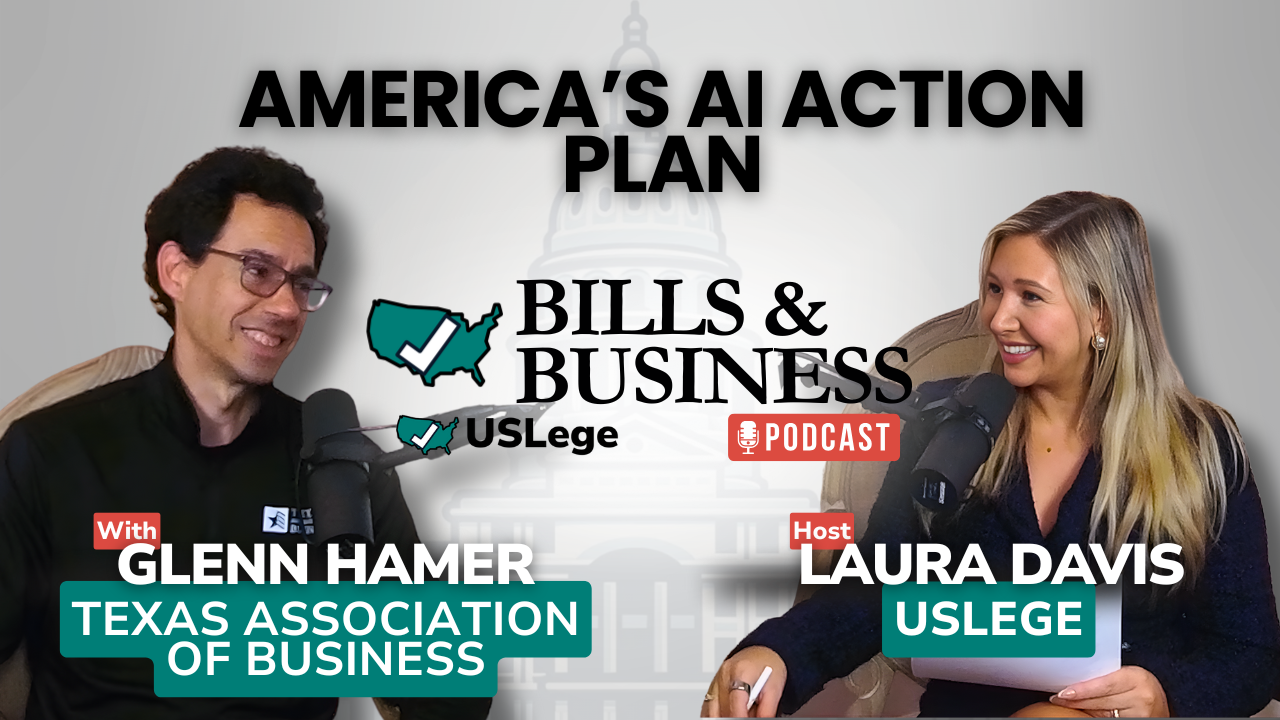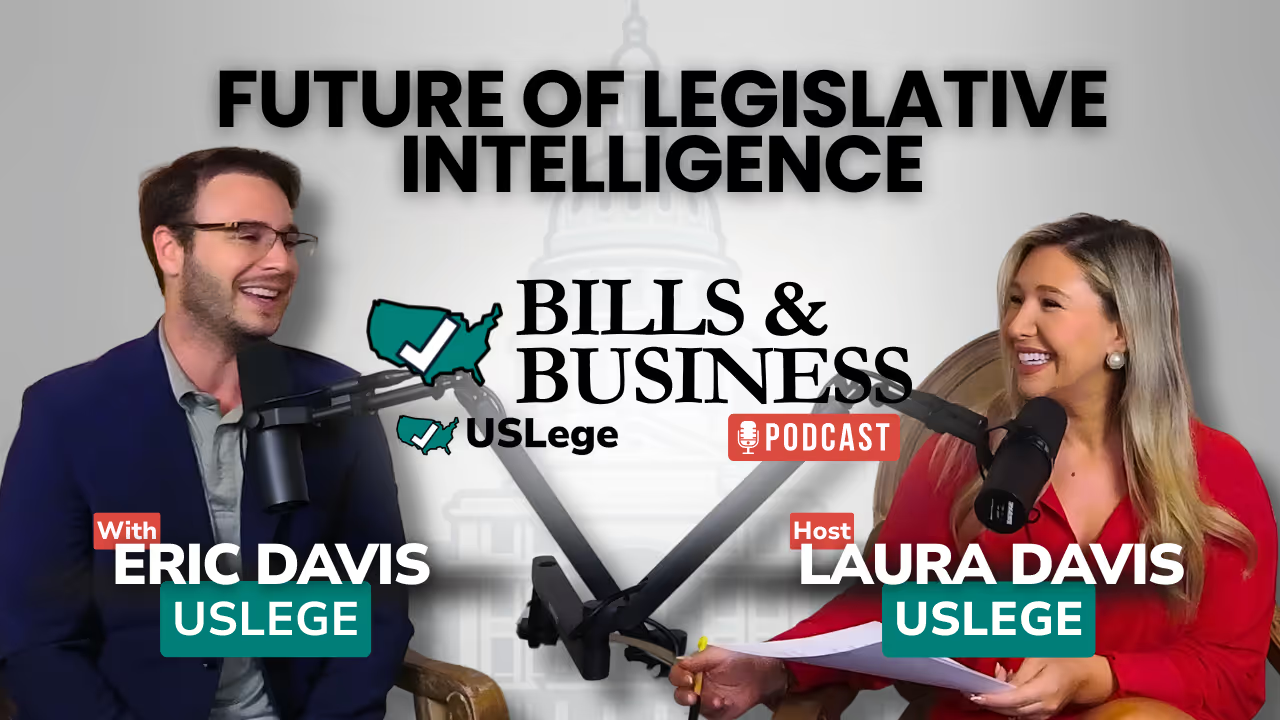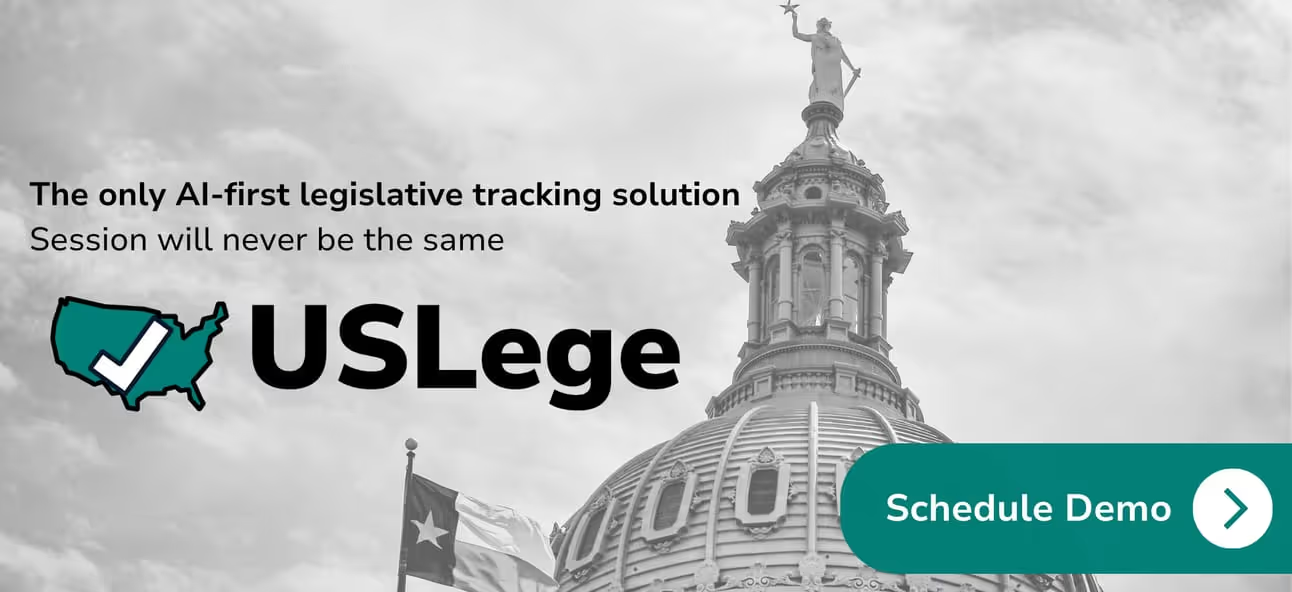
Welcome back, friends
Beginning with the 2025–2026 school year, Texas high school students will likely be required to complete a dedicated personal finance course to graduate, a move aimed at better preparing youth with essential money management skills; the legislation passed with overwhelming bipartisan support and directs the Texas Education Agency to make accessible, no-cost curricula available. Meanwhile, the Texas House approved Senate Bill 22, a $1.5 billion film incentive program designed to boost local production and economic growth, though it faces criticism from some lawmakers concerned about public spending on private entertainment ventures.
Today’s Insights:
- HB 27 Heads to The Governor’s Desk, Looking to Make Financial Literacy a Graduation Must
- Texas House Passes $1.5B Film Incentive Bill to Grow In-State Productions
HB 27 Heads to The Governor’s Desk, Looking to Make Financial Literacy a Graduation Must
The Legislature has given final approval to HB 27 by Rep. Ken King, which would require high school students to complete a financial literacy course. Beginning with the 2025–2026 school year, students entering ninth grade will need to pass the standalone course, distinct from the previously combined economics and financial literacy model, to satisfy graduation requirements. The revised curriculum will offer more targeted instruction on essential life skills such as budgeting, credit, savings, loans, and financial planning. The Texas Education Agency (TEA) is tasked with supporting implementation by compiling a list of free, open-source curricula that school districts may use. Additionally, the State Board of Education (SBOE) will permit students to fulfill the requirement through an Advanced Placement (AP) course, provided it meets equivalent rigor and content standards.
HB 27 passed the House 140-1 and passed unanimously in the Senate, where it was sponsored by Senator Pete Flores
The final legislation reflected a more structured and prescriptive approach than when it was originally proposed. As filed, the bill would have embedded personal finance more broadly within social studies while encouraging optional electives. As passed by the Legislature, HB 27 establishes personal finance as a separate, standalone course requirement for graduation. The final bill also places a stronger emphasis on curriculum accessibility and cost containment by directing TEA to identify no-cost instructional materials. These changes align with a broader national movement to bolster financial preparedness among students.
Texas House Passes $1.5B Film Incentive Bill to Grow In-State Productions
The Texas House of Representatives voted 114-26 on Monday to approve SB 22, legislation that would allocate $300 million every two years to support film, television, and digital media production within the state. The bill, which now returns to the Senate to consider House amendments, establishes a multi-tiered grant program that awards up to 25% of in-state production spending to qualifying projects. To be eligible, productions must employ a minimum of 35% Texas residents—a threshold that will rise incrementally—and must be approved by the Governor’s Music, Film, Television, and Multimedia Office. Additional incentives are available for projects filming in rural areas, highlighting Texas heritage, employing veterans, partnering with higher education institutions, or completing significant post-production work within the state. The program excludes certain categories such as adult content, political messaging, religious services, and class projects.
Supporters of the measure describe it as a strategic investment in a growing sector that could expand Texas' creative economy, retain local talent, and attract major productions currently drawn to other states with more robust incentives. Critics have expressed concerns over the use of public funds to support private entertainment ventures, arguing the money could be better directed toward other taxpayer priorities. The legislation follows a broader national trend of states increasing film and media incentives to compete for a larger share of domestic production activity, particularly as streaming platforms and independent studios seek cost-effective filming environments.
We hope you enjoyed today’s read!
Stay connected with TXLege News on X and LinkedIn!
🤝 Texas Venture Forum & Gala May 28–29

USLege is headed to the Texas Venture Forum & Gala May 28–29, sponsoring, speaking, and podcasting live from the floor. Join us for the conference and gala at the intersection of tech and government.
🎙️We Have a Podcast! 🎙️
Bills and Business is your go-to podcast for conversations related to Texas legislation and business. Hosted by Laura Carr, Co-Founder of USLege—an AI-driven legislative tracking software—we bring you in-depth analysis on economic trends, impactful legislation, and key developments shaping Texas business.
Subscribe on Youtube and Spotify for weekly episodes!

- 01 First
Subscribe to our Newsletter

Read more news

#42 - Glenn Hamer: America’s AI Action Plan
Welcome to Episode #42 of Bills & Business. In this episode, Laura Carr, Co-Founder of USLege, sits down with Glenn Hamer, President and CEO of the Texas Association of Business, to unpack the federal government’s new America’s AI Action Plan, a national strategy shaping the future of business, innovation, and competitiveness.
Glenn shares how this plan impacts Texas employers, entrepreneurs, and innovators, exploring its implications for AI infrastructure, workforce development, and global market positioning. Together, Laura and Glenn break down how policy decisions in Washington could fuel new opportunities in Texas’s energy, technology, and manufacturing sectors.
This conversation offers insight into the connection between federal AI policy and Texas’s business future, highlighting the state’s leadership potential in the next generation of innovation.
Don’t forget to subscribe to Bills & Business on Apple Podcasts, Spotify, and YouTube for more deep dives into Texas policy and business news.
📲 Follow Laura Carr
🐦 Twitter: @Laura_USLege
💼 LinkedIn: https://www.linkedin.com/in/laurauslege/
📸 Instagram: https://www.instagram.com/thereallauracarr/
🛍️ ShopMy: https://shopmy.us/shop/lauraluise?Section_title=latest-finds&tab=collections
✍️ Substack: https://lauraluise.substack.com/
🔗 Links: https://lauraluise.carrd.co/
📲 Follow USLege
✨ Instagram: https://www.instagram.com/uslege.ai/
📘 Facebook: https://www.facebook.com/USLegeai
🐦 Twitter: @USLege_ai
💼 LinkedIn: https://www.linkedin.com/company/uslege-ai/
🎧 Subscribe to Bills & Business
🌐 Website: https://www.uslege.ai/
▶️ YouTube: https://www.youtube.com/@BillsandBusiness
🎵 Spotify: https://open.spotify.com/show/22ZWg9VVb2AEGqyV14osNi?si=effe3795f8414171
🍎 Apple Podcasts: https://podcasts.apple.com/ph/podcast/bills-and-business-by-uslege/id1781059329
🎥 TikTok: https://www.tiktok.com/@uslege
📲 Follow Glenn Hamer
🐦 Twitter: @GlennHamer
💼 LinkedIn: https://www.linkedin.com/in/glennhamer/
🎬 Produced by USLege
📞 Want to see USLege in action? Schedule a demo today: https://www.uslege.ai/demo
#aipolicy #artificialintelligence #billsandbusiness #texasbusiness #uslege #txlege

How to Choose the Best Legislative Tracking Software for Your Organization
In today’s fast-paced policy environment, staying informed is a constant challenge. Bills, hearings, and regulatory updates move quickly across jurisdictions, creating risks for organizations that rely on timely information, including the risk of missing important information when relying on manual processes. Choosing the best legislative tracking software is one of the most effective ways to manage legislative and regulatory tracking efficiently, minimize missed opportunities, and strengthen decision-making.
This article walks you through how to evaluate legislative and regulatory tools, compare coverage and capabilities, and understand which features help government affairs professionals and public affairs teams stay informed and a step ahead of rapid change. You’ll learn how to assess software platforms, review vendor performance, and apply a clear framework to guide your organization’s choice.
If you’re exploring modern solutions for policy monitoring, visit the best legislative tracking software to see how advanced systems help professionals track activity and analyze critical information across multiple jurisdictions.
Why Legislative Tracking Software Matters
Every legislative session brings thousands of new bills and hearings across the federal government, state legislatures, and local governments. For government affairs teams and law firms that must monitor state legislation or track regulations, the pace of change can be overwhelming.
Without digital platforms, staff may spend hours each day manually searching databases, reading committee reports, and updating spreadsheets. That process isn’t just inefficient—it’s risky. Missing one act or amendment could affect compliance, advocacy strategy, or even public reputation. Relying on manual tracking increases the chance of overlooking important details in legislative information, which can lead to missing critical updates or changes.
The Challenge of Volume and Velocity
- Legislative and regulatory tracking spans bills, hearings, amendments, and regulations that appear daily.
- Strategic decisions depend on access to verified data and real-time alerts.
- Regulatory developments from government agencies can impact clients and advocacy groups instantly.
The Payoff
Automated tracking saves time, reduces human error, and delivers actionable insights faster. Teams can filter results, share updates, and focus their attention where it matters most—on influencing policy and shaping outcomes.
Key Features and Capabilities to Look For
Choosing the right tracking platform starts with understanding what differentiates effective tools from simple alert systems. Below are core features to evaluate before purchasing or implementing any solution.
Coverage Across Jurisdictions
The best systems provide a broad jurisdictional reach—from federal legislation to state legislative hearings and local government acts. Before committing, confirm whether the platform includes:
- Federal and state legislation: Bills, amendments, regulations, hearings, and newly introduced bills, with Congress as a key source for federal legislative tracking.
- Regulatory activity: Notices from agencies and committees.
- Comprehensive data sources: Congressional records, local archives, and state portals.
Understanding the dynamic nature of Capitol Hill is crucial, as legislative activity and staff turnover at the federal level can significantly impact advocacy strategies and tracking efforts.
If your team must monitor state legislation, check that the vendor’s coverage includes smaller states and municipalities that frequently pass niche regulations.
Real Time Alerts and Notifications
Fast updates are critical for professionals who manage compliance or advocacy campaigns. Strong systems offer:
- Instant email alerts for bill introductions, amendments, or new hearings.
- Custom filters for topics, sponsors, committees, or jurisdictions.
- Real-time dashboards showing where legislation is moving next.
- Collaboration tools so teams can assign follow-up actions or comments.
With real-time alerts, government affairs professionals and policy experts can respond before deadlines pass—ensuring that organizations stay ahead and fully informed.
Analytics, Reporting, and Insight Generation
Good tracking isn’t just about collecting raw data. It’s about turning that data into useful analysis. A well-built platform helps users:
- Create trend dashboards showing activity by topic, legislator, or region.
- Generate reports to brief clients, executives, or advocacy groups.
- Use artificial intelligence to compare bills, predict movement, or analyze outcomes.
- Access historical data for longitudinal analysis.
By combining analytics with visualization tools, organizations gain the context needed to make strategic decisions quickly.
Artificial Intelligence in Legislative Tracking
Artificial intelligence transforms how government affairs professionals and government relations teams approach legislative tracking. By harnessing AI, organizations can analyze massive volumes of legislative and regulatory data in real time, ensuring that no critical bill or regulation goes unnoticed. AI-powered tools can automatically identify and prioritize bills that align with an organization’s advocacy goals, generate personalized bill summaries, and even predict the likelihood of legislative movement—all with minimal manual intervention.
For government relations professionals, this means less time spent sifting through raw data and more time focusing on strategy, stakeholder engagement, and influencing policy outcomes. AI-driven platforms can scan every legislative chamber, flagging new bills and regulations that matter most to your organization. These actionable insights empower teams to stay ahead of policy developments, respond quickly to emerging issues, and confidently make strategic decisions. As artificial intelligence continues to evolve, it will play an increasingly vital role in helping professionals track legislation, analyze regulatory trends, and drive effective advocacy across all levels of government.
Ease of Use and Vendor Support
Complex systems often fail because users find them hard to operate. When evaluating tracking software, consider:
- Intuitive search functions and clear navigation.
- Vendor training, documentation, and help-desk responsiveness.
- Implementation timelines and onboarding resources.
- Integration options with CRM, compliance, or reporting platforms.
The easier the interface, the more likely professionals across departments—legal, advocacy, and communications—will actually use it.
Security and Data Protection
When it comes to legislative tracking, security and data protection are non-negotiable for government affairs professionals and organizations. The sensitive nature of legislative and regulatory data—combined with the need for accurate, up-to-date information—means that robust security measures are essential. Leading legislative tracking platforms employ advanced encryption, secure servers, and strict access controls to ensure that only authorized users can access critical information.
In addition, reputable platforms adhere to industry best practices and compliance standards, safeguarding client data from unauthorized access or breaches. This commitment to security allows government relations professionals to focus on their core strategy and advocacy efforts, knowing that their data is protected at every step. By selecting a platform with proven security protocols, organizations can confidently manage their legislative tracking activities and maintain the trust of stakeholders, clients, and team members.
Integration with Other Tools
For government affairs professionals, efficiency and collaboration are key to successful advocacy. That’s why seamless integration between legislative tracking platforms and other essential tools—such as CRM systems, email clients, and social media monitoring software—is so valuable. Integrated platforms enable government relations professionals to track bills, monitor legislator interactions, and analyze advocacy campaigns all in one place, reducing manual data entry and streamlining workflows.
By connecting legislative tracking with CRM systems, organizations can maintain a comprehensive record of stakeholder engagement, track the progress of key bills, and measure the impact of their advocacy efforts. Integration with communication tools also ensures that teams can quickly share updates, assign tasks, and coordinate responses to legislative developments. Ultimately, these integrations help government affairs teams stay ahead of policy changes, maximize efficiency, and deliver more effective results for their organizations and clients.
Cost, Scalability, and ROI
Pricing varies widely across platforms. Some charge by user, others by jurisdiction. Evaluate:
- Scalability: Can you expand access as new teams join?
- Hidden costs: Extra fees for integrations or data exports.
- ROI: Measure efficiency gains, reduced research hours, and improved regulatory compliance.
The right investment pays for itself through faster tracking, stronger insight, and better policy outcomes.
Building Your Decision-Making Checklist
A structured checklist helps teams evaluate multiple vendors objectively. Consider the following steps:
- Define scope: Identify which government levels—federal, state, local—your organization must monitor.
- Map stakeholders: Determine which departments, clients, professionals, or legislators need access to legislative tracking information.
- Create a scoring system: Rate vendors on coverage, alerts, analytics, ease of use, and cost.
- Request demos: Ask vendors to show how their tools track legislation and deliver reports.
- Review accuracy: Compare automated alerts to official legislative portals to confirm reliability.
- Pilot the system: Run a short test during a legislative session to evaluate performance.
This structured review allows government relations professionals and policy experts to make choices based on measurable evidence, not sales claims.
Common Pitfalls and How to Avoid Them
Even sophisticated organizations can stumble during implementation. Watch for these frequent errors:
- Assuming full coverage: Some systems exclude local governments or agency regulations. This can result in missing important government actions, leaving you unaware of key legislative or regulatory developments.
- Overloading users: Too many irrelevant alerts lead to fatigue.
- Ignoring integration: Platforms that don’t connect to existing tools reduce efficiency.
- Underestimating training: Teams may resist new systems without clear onboarding.
- Skipping metrics: Without KPIs, you can’t analyze ROI or improvement.
Avoiding these issues keeps your strategy grounded in real performance data.
Implementation Best Practices and Maximizing Value
Rolling out a new tracking platform works best when everyone understands the process. Follow these steps:
- Stakeholder alignment: Engage government affairs, legal, and communications teams early.
- Define taxonomy: Standardize issue tags, committees, and jurisdiction names.
- Workflow mapping: Assign ownership for monitoring, escalation, and communication.
- Training: Offer live sessions and short guides to reinforce adoption.
- Continuous review: Revisit settings each quarter to refine alerts and search filters.
As policy cycles shift, ongoing optimization ensures that your system remains accurate, relevant, and responsive to regulatory developments.
For additional insight on how legislative and regulatory tools operate, review the NCSL’s bill tracking overview, which explains how professionals track state legislation effectively.
Future of Legislative Tracking
The future of legislative tracking is bright, with rapid advancements in artificial intelligence, machine learning, and data analytics reshaping how government affairs professionals and organizations monitor and influence policy. As the demand for real-time, data-driven insights grows, legislative tracking tools will become even more sophisticated—offering predictive analytics, automated reporting, and deeper integration with other advocacy platforms.
We can expect to see greater adoption of cloud-based solutions, enhanced security features, and more intuitive user interfaces that make it easier for government relations professionals to access and analyze critical information. The integration of legislative tracking with CRM, communication, and analytics tools will provide a unified view of advocacy efforts, enabling teams to coordinate strategy and engage stakeholders more effectively.
As the policy landscape evolves, staying ahead of legislative and regulatory developments will be essential for organizations seeking to influence legislation and achieve their advocacy goals. By embracing the latest technologies and innovations, government affairs professionals can ensure they remain agile, informed, and ready to drive meaningful impact in an ever-changing environment.

#41 - Eric Davis: The Future of Legislative Intelligence
Welcome to Episode #41 of Bills & Business. In this episode, Laura Carr, Co-Founder of USLege, sits down with Eric Davis, Co-Founder and CEO of USLege, for a behind-the-scenes look at how the company went from an idea in an Austin apartment to a fast-growing leader in legislative intelligence.
Eric shares the real story of building USLege from the ground up: the early bootstrapping days, customer research that validated the vision, and the turning points that led to securing investors like Reformation Ventures and Avalanche Ventures. Together, Laura and Eric discuss what it takes to build a Texas tech startup that is transforming how policy professionals work, communicate, and make impact.
They also dive into the next chapter for USLege, from AI-driven workflows to the future of legislative data and the evolving relationship between technology and government.
Don’t forget to subscribe to Bills & Business on Apple Podcasts, Spotify, and YouTube for more deep dives into Texas policy and business news.
📲 Follow Laura Carr
🐦 Twitter: @Laura_USLege https://x.com/Laura_USLege
💼 LinkedIn: https://www.linkedin.com/in/laurauslege/
📸 Instagram: https://www.instagram.com/thereallauracarr/
🛍️ ShopMy: https://shopmy.us/shop/lauraluise?Section_title=latest-finds&tab=collections
✍️ Substack: https://lauraluise.substack.com/
🔗 Links: https://lauraluise.carrd.co/
📲 Follow USLege
✨ Instagram: https://www.instagram.com/uslege.ai/
📘 Facebook: https://www.facebook.com/USLegeai
🐦 Twitter: @USLege_ai https://x.com/USLege_ai
💼 LinkedIn: https://www.linkedin.com/company/uslege-ai/
🎧 Subscribe to Bills & Business
🌐 Website: https://www.uslege.ai/
▶️ YouTube: https://www.youtube.com/@BillsandBusiness
🎵 Spotify: https://open.spotify.com/show/22ZWg9VVb2AEGqyV14osNi?si=effe3795f8414171
🍎 Apple Podcasts: https://podcasts.apple.com/ph/podcast/bills-and-business-by-uslege/id1781059329
🎥 TikTok: https://www.tiktok.com/@uslege
📲 Follow Eric Davis
💼 LinkedIn: https://www.linkedin.com/in/eric-in-tech/
🎬 Produced by USLege
📞 Want to see USLege in action? Schedule a demo today! https://www.uslege.ai/demo

























